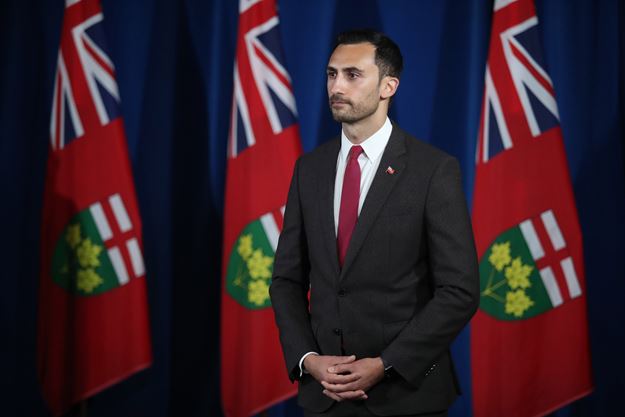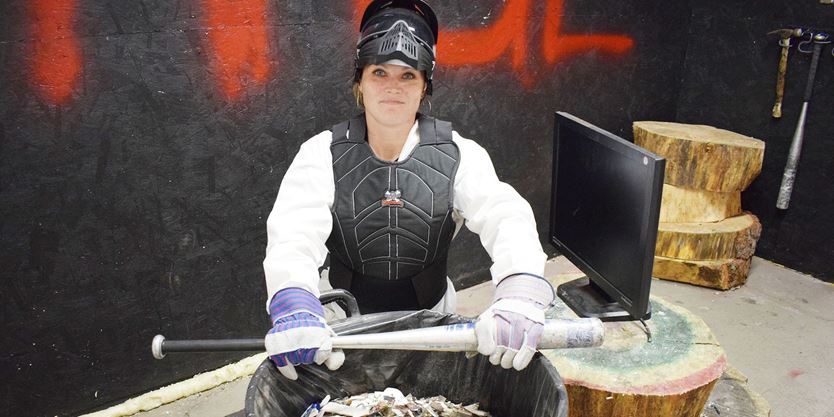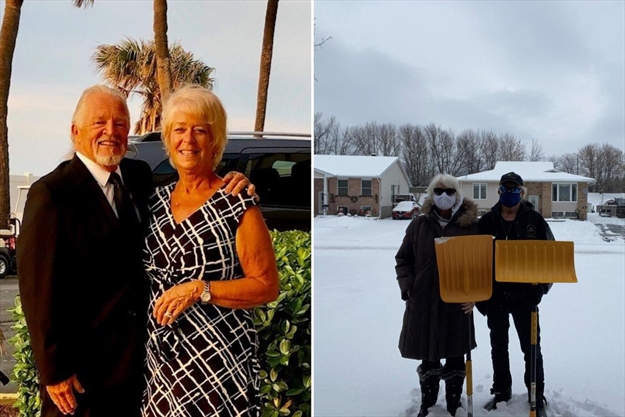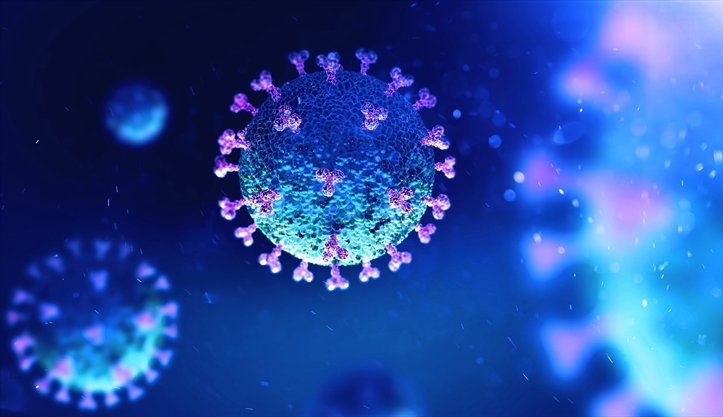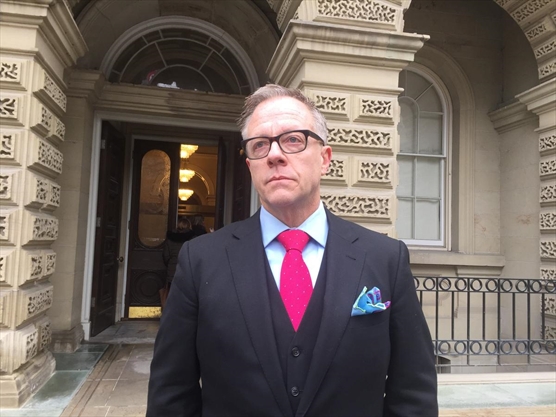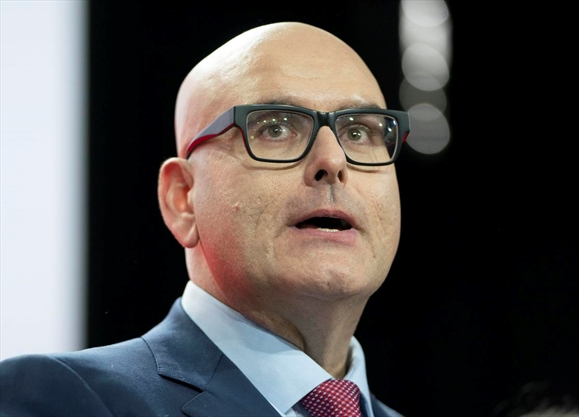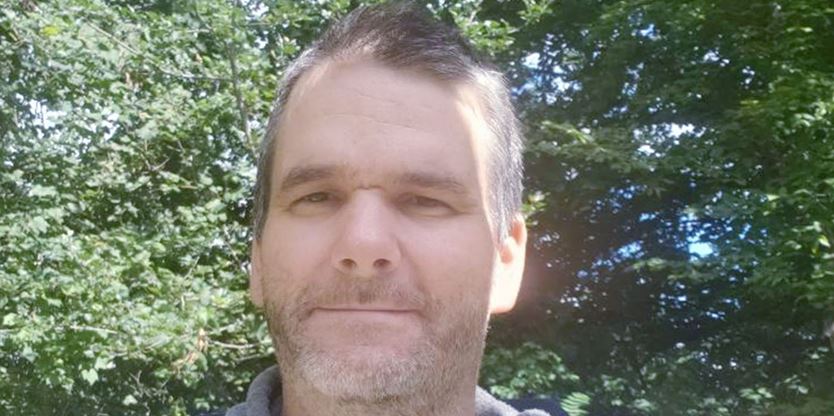The latest news from Canada and around the world Sunday. This file will be updated throughout the day. Web links to longer stories if available.
10:56 p.m.: Eighteen students and a staff member have tested positive for COVID-19 at an east-end Toronto elementary school.
A spokesman for the Toronto District School Board says the staff and students at Thorncliffe Park Public School were tested for the virus as part of a new pilot project.
Ryan Bird says 14 classes have been asked to self-isolate, but the school will remain open.
In a letter to parents sent Sunday night, the school principal says that’s because four per cent of the school tested positive, compared to a 16 per cent positivity rate in the broader Thorncliffe Park community.
He says he understands the cases are worrisome, but notes the school is actively monitoring the situation and communicating with Toronto Public Health.
7:35 p.m.: Officials in southern Ontario fined businesses, charged anti-maskers and busted at least one massive party over the weekend as the province recorded another 1,708 cases of COVID-19 on Sunday.
The enforcement in York, Hamilton and Peel came after a week that saw record-setting viral case counts and the introduction of more stringent public health measures in some regions.
In Mississauga, Ont., a part of Peel Region which is currently under lockdown, police said authorities had broken up a party with 60 attendees at a short-term rental unit.
“It’s a tough time for everyone,” Deputy Chief Marc Andrews of the Peel Regional Police tweeted. “These antics help no one.”
He said bylaw officers issued 27 fines of $880, and three Part 3 summons to the hosts, who he said could face at least $10,000 in fines if convicted.
In York Region, officials continued an enforcement blitz at businesses to make sure they were following public health protocols for the province’s “red” zones.
The rules limit indoor dining to 10 customers at a time with physical distancing in place. Gyms, meanwhile, can only have 10 patrons inside at once, while 25 people can attend outdoor classes.
Officers inspected 256 businesses on Sunday and issued charges at 16, a news release said.
An L.A. Fitness location in East Gwillimbury, Ont., and the Trio Sportsplex in Vaughan, Ont., are among those facing charges.
Authorities have inspected 867 businesses since Friday, laid 32 charges and completed 1,151 “compliance education activities,” the release said.
Farther west, Hamilton Police announced they had charged three men — aged 26, 48 and 72 — at a “Hugs over Masks” protest in the city’s downtown area on Sunday.
Police said 35 people attended the event, exceeding the maximum number of people allowed at outdoor gatherings.
“Prior to the event, Hamilton Police identified the organizer and informed him that the planned gathering would breach offences under the Reopening Ontario Act and leave him open to charges, police said in a written statement. “The organizer went ahead with the event.”
All three men — one of whom police said was the organizer — were charged under the Act, and would face a fine of at least $10,000 if convicted.
3:30 p.m.: Saskatchewan is reporting 351 new COVID-19 cases, but no new deaths today. The number of people who have died from COVID-19 in the province stands at 45. Saskatchewan’s daily COVID-19 updates have noted this weekend that community transmission can happen quickly. The updates state that 17 nurses in one hospital were recently required to self-isolate after being identified as close contacts to positive cases linked to sporting events and general community transmission.
2:30 p.m.: Nunavut health officials are reporting 13 new cases in the territory. The number of local active cases, however, declined today due to 32 people who have recovered.
That figure now stands at 112. The territory reports that everyone with active COVID-19 is doing well, with mild to moderate symptoms.
2:30 p.m.: The latest numbers of confirmed COVID-19 cases in Canada as of 2:16 p.m. EST on Nov. 29, 2020:
There are 368,279 confirmed cases in Canada.
- Quebec: 141,038 confirmed (including 7,033 deaths, 122,014 resolved)
- Ontario: 114,746 confirmed (including 3,648 deaths, 97,319 resolved)
- Alberta: 54,836 confirmed (including 524 deaths, 39,381 resolved)
- British Columbia: 30,884 confirmed (including 395 deaths, 21,304 resolved)
- Manitoba: 16,483 confirmed (including 301 deaths, 7,010 resolved)
- Saskatchewan: 8,239 confirmed (including 45 deaths, 4,589 resolved)
- Nova Scotia: 1,271 confirmed (including 65 deaths, 1,078 resolved)
- New Brunswick: 481 confirmed (including 7 deaths, 363 resolved)
- Newfoundland and Labrador: 333 confirmed (including 4 deaths, 297 resolved)
- Nunavut: 177 confirmed (including 65 resolved)
- Prince Edward Island: 72 confirmed (including 68 resolved)
- Yukon: 42 confirmed (including 1 death, 29 resolved)
- Northwest Territories: 15 confirmed (including 15 resolved)
- Repatriated Canadians: 13 confirmed (including 13 resolved)
- Total: 368,279 (0 presumptive, 368,279 confirmed including 12,023 deaths, 293,477 resolved)
2:00 p.m.: The number of COVID-19 cases continues to creep up across most of Atlantic Canada.
New Brunswick is reporting 14 new cases of the novel coronavirus today, the highest in eastern Canada.
Elsewhere Nova Scotia says it’s identified 10 new diagnoses, nine of which are in the province’s central zone, while Newfoundland and Labrador is reporting four new cases.
Health officials in Prince Edward Island held a rare weekend news conference today, but say there are no new cases in the province.
1:35 p.m.: New York City will reopen its school system to in-person learning, and increase the number of days a week many children attend class, even as the coronavirus pandemic intensifies in the city, Mayor Bill de Blasio said Sunday.
The announcement marks a major policy reversal for the nation’s largest school system, less than two weeks after de Blasio, a Democrat, announced that schools were shutting down because of a rising number of COVID-19 cases in the city.
New York City’s public schools opened to in-person learning starting in September for students whose parents had chosen bricks-and-mortar schooling. School buildings closed again Nov. 19 amid rising COVID-19 infections in the city.
The mayor said the city was doing away with its previous trigger for closing schools, which was when 3 per cent or more of the virus tests conducted in the city over a seven-day period came back positive.
Since then, de Blasio suggested, relatively low numbers of positive coronavirus tests at schools show that it’s possible to keep schools open even with a citywide test positivity rate over 3 per cent.
New York City exceeded the 3 per cent threshold early in November, and things have slightly worsened since then. More than 9,300 New York City residents have tested positive for the virus over the past seven days.
12:40 p.m.: The chairman of American vaccine maker Moderna says Canada is near the front of the line to receive 20 million doses of the COVID-19 vaccine it pre-ordered.
Noubar Afeyan offered that assessment today in an interview with CBC’s Rosemary Barton Live. Afeyan’s remarks come as the Trudeau government has come under fire this past week for its ability to deliver a timely vaccine to Canadians.
Prime Minister Justin Trudeau created a firestorm when he said Canadians will have to wait a bit to get vaccinated for COVID-19 because the first doses off the production lines will be used in the countries where they are made.
Afeyan was asked whether the fact that Canada committed to pre-purchase its doses before other jurisdictions means it will get its supply first. Afeyan confirmed that was the case.
“The people who are willing to move early on with even less proof of the efficacy have assured the amount of supply they were willing to sign up to,” he said.
“In the case of Canada, that number is about 20 million doses. But the Canadian government, like others, have also reserved the ability to increase that amount. And those discussions are ongoing,” he added.
11:35 a.m.: Dr. Anthony Fauci, America’s top infectious disease expert, said Sunday that the U.S. may see “surge upon a surge” of the coronavirus over the coming weeks, and he does not expect current recommendations around social distancing to be relaxed before Christmas.
“When you have the kind of inflection that we have, it doesn’t all of a sudden turn around like that,” Dr. Fauci, director of the National Institute of Allergy and Infectious Diseases, told ABC’s “This Week.” “So clearly in the next few weeks, we’re going to have the same sort of thing. And perhaps even two or three weeks down the line … we may see a surge upon a surge.”
Fauci also appeared on NBC’s “Meet the Press,” where he made similar remarks, adding that it’s “not too late” for people travelling back home after Thanksgiving to help stop the spread of the virus by wearing masks, staying distant from others and avoiding large groups of people.
“So we know we can do something about it, particularly now as we get into the colder season and as we approach the Christmas holidays,” he said.
The number of new COVID-19 cases reported in the United States topped 200,000 for the first time Friday. The highest previous daily count was 196,000 on Nov. 20, according to data from Johns Hopkins University.
11:20 a.m.: The latest numbers of confirmed COVID-19 cases in Canada as of 11:11 a.m. EST on Nov. 29, 2020:
There are 366,193 confirmed cases in Canada.
- Quebec: 141,038 confirmed (including 7,033 deaths, 122,014 resolved)
- Ontario: 114,746 confirmed (including 3,648 deaths, 97,319 resolved)
- Alberta: 54,836 confirmed (including 524 deaths, 39,381 resolved)
- British Columbia: 30,884 confirmed (including 395 deaths, 21,304 resolved)
- Manitoba: 16,118 confirmed (including 290 deaths, 6,804 resolved)
- Saskatchewan: 7,888 confirmed (including 45 deaths, 4,521 resolved)
- Nova Scotia: 1,271 confirmed (including 65 deaths, 1,078 resolved)
- New Brunswick: 481 confirmed (including 7 deaths, 363 resolved)
- Newfoundland and Labrador: 333 confirmed (including 4 deaths, 297 resolved)
- Nunavut: 164 confirmed (including 33 resolved)
- Prince Edward Island: 72 confirmed (including 68 resolved)
- Yukon: 42 confirmed (including 1 death, 29 resolved)
- Northwest Territories: 15 confirmed (including 15 resolved)
- Repatriated Canadians: 13 confirmed (including 13 resolved)
- Total: 366,193 (0 presumptive, 366,193 confirmed including 11,988 deaths, 291,796 resolved)
11:15 a.m.: Quebec is reporting 1,395 new cases of COVID-19 and 12 additional deaths linked to the virus. Health officials say four of those deaths occurred in the past 24 hours and eight others took place between Nov. 22 and 27. Hospitalizations went down by 13 today for a total of 665, including 92 people in intensive care — a decrease of one compared to the previous day. Quebec has now reported 141,038 total cases of COVID-19 since the pandemic began and 7,033 deaths.
11:10 a.m.: Ontario is reporting 1,708 new cases of COVID-19 and 24 new deaths related to the novel coronavirus.
Health minister Christine Elliott says 503 of those cases are in Peel Region and 463 in Toronto — the only two regions currently under lockdown. She says another 185 are in York Region, which is at the red alert level, the next most stringent under the province’s tiered system.
The province says nearly 54,000 tests were completed since the last daily update, and 1,443 cases are newly considered resolved.
The numbers come a day before more stringent COVID-19 measures are set to take effect in five Ontario regions.
Windsor-Essex will be moved to the red level, Haldimand-Norfolk to orange, and three others — Hastings Prince Edward, Lambton and Northwestern — to the yellow.
Provincial data released last week suggested case counts were flattening somewhat, but Ontario recorded its highest number of daily infections the next day, at 1,855.
Officials have said it could take up to two weeks after new restrictions are imposed to see any improvements.
11:04 a.m.: The Czech government said Sunday it is easing measures imposed to contain the new coronavirus due to falling numbers of new confirmed cases.
Health Minister Jan Blatny said all stores, restaurants and bars can reopen on Thursday and a ban on Sunday sales is lifted. Restaurants can be open 6 a.m. to 10 p.m., though they are limited to 50 per cent of their capacity. Stores and shopping centres also must limit the number of customers. Hair salons, fitness centres and gyms are allowed to reopen, as are zoos, museums and galleries.
The Czech Republic was among the hardest hit by a new wave of infections in the fall, but the number of new cases has been on a decline since Nov 4.
The country of almost 10.7 million had 518,649 confirmed cases with 8,054 fatalities. The day-to-day increase of new cases reached 2,667 on Saturday.
11:02 a.m.: The NFL has fined the New Orleans Saints $500,000 and stripped them of a 2021 seventh-round draft pick for violating league COVID-19 protocols, a person with direct knowledge of the discipline told The Associated Press on Sunday.
The New England Patriots were fined $350,000 for similar violations, the person said, speaking to the AP on condition of anonymity because neither the league nor the teams have announced the fines or loss of draft pick.
New Orleans was fined as a repeat offender; Sean Payton previously was docked $150,000 and the team $250,000 because the head coach failed to properly wear a face covering during a game against the Raiders in Week 2. The more recent issue with the Saints came after a Week 9 win over Tampa Bay when the team’s celebrations included players not wearing masks while in close proximity to each other. The celebrations were captured on video by some players and posted to social media.
The Saints are expected to appeal the discipline, which ESPN first reported Sunday morning.
10:20 a.m.: When Kelly Lopes learned back in the spring that the Ontario government was ordering her teenaged children to stay home from school for their own safety but expected them and their parents to continue going to work, fear and anger set in almost immediately.
In the seven months since then, however, the grocery store cashier said those emotions have given way to a numbness she said is sustaining her as she battles through the COVID-19 pandemic in Ontario’s hardest-hit region.
She said that as the second wave has swelled to shocking heights in Brampton, Ont., her job has gotten harder and customers have gotten more combative.
“A lot of us are burnt out,” Lopes said Friday. “I get that we’re not paramedics or first responders, but we’re still a huge essential to a country that needs to eat. Without us being here, how do you get your food?”
Peel Region, just west of Toronto, has led the province in COVID-19 cases per capita for weeks now, with upwards of 180 new weekly cases per 100,000 residents — nearly triple the rate of the province as a whole.
Brampton makes up less than half of Peel’s population, but accounts for more than 60 per cent of its COVID-19 cases.
Read the full story by Nicole Thompson:
10:18 a.m.: Ontario is reporting 1,708 cases of , down for the second day in a row after hitting a record high of 1,855 cases Friday, and nearly 54,000 tests completed. Locally, there are 503 new cases in Peel, 463 in Toronto and 185 in York Region. There are 1,443 more resolved cases.
9:10 a.m. A little over a year from now, the TTC hopes to start work on a massive transit project beneath the heart of downtown Toronto.
The expansion of Bloor-Yonge station will cost an estimated $1.5 billion, take seven years to complete and require building a new subway platform, elevators, and escalators at an underground transit hub surrounded by dense commercial real estate, all while regular train service continues to operate.
Before the pandemic, the urgent need to expand Bloor-Yonge was evident to anyone who stood on its Line 1 subway platform on a weekday morning, when crowds of downtown commuters could grow dangerously large.
But during the pandemic, those crowds have thinned dramatically. With downtown office towers largely vacant and employers contemplating a shift to work-from-home, when commuters will return to the transit network and in what volume is anyone’s guess. With so much uncertainty, is it time to rethink expensive transit projects that were planned based on pre-pandemic travel patterns?
Read the full story by Toronto Star transportation reporter Ben Spurr:
8:47 a.m.: Curiosity runs rampant in the class as I moderate a discussion. This is going well. Next up in the lesson I want to show a video.
But wait. The audio won’t work. Is it the Wi-Fi? Is it an application glitch? How do I fix this? There’s a minute of intense inner stress before my students set me straight: “Ms. Smith, you have to have the video in the same window as your Google Meet and present from there, not your separate screen.”
Read the full story by Claire Smith here:
8:45 a.m.: Maryann Swain waves smoke from burning sage throughout the gym at the Gaagagekiizhik school, just as her grandmother taught her when they were being exposed to pathogens on their reserve. Today, in Ontario’s first Anishinaabe immersion school, the need to clear the room of negative energy is more urgent with the onset of .
“People are really scared here,” says Swain, an elder from Grassy Narrows First Nation. “Our people have seen plagues before.”
It’s a long-held tradition among the Ojibwe to disperse the negative energy before the annual fall feast, and at Gaagagekiizhik, where she teaches Indigenous youth about their culture they are reminded of a new challenge to ensuring the survival of their way of life.
Read the full story by Ryan Moore:
8:44 a.m.: Pope Francis is encouraging people to try to take away something good “even from the difficult situation that the pandemic forces on us.”
Addressing faithful gathered a safe distance apart in vast St. Peter’s Square on Sunday, Francis offered these suggestions: “greater sobriety, discrete and respectful attention to neighbours who might be in need, some moments of prayer in the family with simplicity.”
Francis said that “these three things will help us a lot.” During the COVID-19 pandemic, the pontiff has often highlighted the economic and social suffering of many.
7:59 a.m.: French churches, mosques and synagogues can open their doors again to worshippers, but only a few of them, as France cautiously starts reopening after a second virus lockdown.
Some churches may defy the 30-person limit which they believe is too unreasonable, and other sites may stay closed until they can fully reopen.
Farid Kachour, secretary general of the association running the mosque of Montermeil, a heavily immigrant suburb northeast of Paris, says that his mosque simply wouldn’t open as long as there is a 30-person limit.
“We can’t choose people” allowed to enter for prayer. “We don’t want to create discontent among the faithful,” he said.
Kachour noted that Muslims pray five times a day and that the mosque would need 40 services a day to allow all the faithful to pray.
7:15 a.m.: Cambodian officials say a family of six and another man tested positive for the coronavirus in a rare case of local infection, and Prime Minister Hun Sen expressed concern that the woman believed to be the source had travelled extensively in the country, including the capital.
The 56-year-old woman’s husband works at the Interior Ministry in charge of prisons. Hun Sen, who himself just emerged from isolation after he was exposed to the infected Hungarian foreign minister, said his three Cabinet ministers will get tested and self-quarantine.
The Health Ministry said in a statement that the woman tested positive three days after becoming feverish. She had been travelling between Siam Reap and Phnom Penh.
Hun Sen also ordered the temporary shutdown of a mall in Phnom Penh, which the woman visited last week.
Cambodia has had 315 confirmed cases of the virus since the pandemic began, most of them acquired abroad.
In other developments in the Asia-Pacific region:
— Hong Kong has reported 115 new coronavirus infections, the first time it has seen cases in the triple digits since Aug. 2. The government on Sunday also announced that classes at kindergarten, primary and secondary schools will be shut for the rest of the year in light of the worsening coronavirus situation in the city. Of the 115 infections reported Sunday, 24 were untraceable. Another 62 were linked to recent outbreaks in dance studios across the city. Employees and recent guests at three restaurants in the city have also been ordered to undergo compulsory testing after multiple positive cases had been linked to the venues. Hong Kong has reported 6,239 coronavirus infections since the pandemic began, with 109 deaths.
— South Korea is shutting down indoor gyms offering intense workout classes and banning year-end parties at hotels in the greater Seoul area to fight the virus. Prime Minister Chung Sye-kyun said Sunday authorities will also ban the operation of private music institutes teaching singing and wind instruments and saunas at public bath houses in the capital area. He said fitness centres, cafes and libraries operating inside apartment complexes will also be closed. The new steps will be effective from Tuesday. The country reported 450 new cases on Sunday.
— India has reported 41,180 new coronavirus cases in the past 24 hours, with the daily toll staying below the 50,000-mark for the fourth week. New Delhi also got some respite as it added fewer than 5,000 cases for the first time in a month. The New Delhi government decided that half its employees, barring senior officials, will be allowed to work from home starting Monday. India reported another 496 deaths in the past 24 hours, raising the death toll to 136,696. India’s confirmed cases since the pandemic began are more than 9.3 million, second behind the U.S.
— A Chinese factory owned by South Korean semiconductor firm SK Hynix has halted operations after an employee was found to be infected with the coronavirus. According to state-owned Xinhua News Agency, the South Korean national worked in a plant in the southwestern city of Chongqing. He travelled to South Korea on Thursday. He displayed no symptoms, but was found to be infected with the virus when he was tested at Incheon airport in Seoul. The factory has been closed, and employees have been isolated and tested, Xinhua reported. The hotel where the employee lived in Chongqing has also been temporarily shut and hotel employees and recent guests were tracked down and tested. Chongqing has so far tested 3,283 people, and 2,674 have been found to be negative. China has so far reported a total of 86,512 confirmed coronavirus infections, with 4,634 deaths. China does not include asymptomatic cases in its tally.
7:11 a.m.: When Turkey changed the way it reports daily COVID-19 infections, it confirmed what medical groups and opposition parties have long suspected — that the country is faced with an alarming surge of cases that is fast exhausting the Turkish health system.
In an about-face, President Recep Tayyip Erdogan’s government this week resumed reporting all positive coronavirus tests — not just the number of patients being treated for symptoms — pushing the number of daily cases to above 30,000. With the new data, the country jumped from being one of the least-affected countries in Europe to one of the worst-hit.
That came as no surprise to the Turkish Medical Association, which has been warning for months that the government’s previous figures were concealing the graveness of the spread and that the lack of transparency was contributing to the surge. The group maintains, however, that the ministry’s figures are still low compared with its estimate of at least 50,000 new infections per day.
No country can report exact numbers on the spread of the disease since many asymptomatic cases go undetected, but the previous way of counting made Turkey look relatively well-off in international comparisons, with daily new cases far below those reported in European countries including Italy, Britain and France.
That changed Wednesday as Turkey’s daily caseload almost quadrupled from about 7,400 to 28,300.
The country’s hospitals are overstretched, medical staff are burned out and contract tracers, who were once credited for keeping the outbreak under check, are struggling to track transmissions, Sebnem Korur Fincanci, who heads the association, told The Associated Press.
“It’s the perfect storm,” said Fincanci, whose group has come under attack from Erdogan and his nationalist allies for questioning the government’s figures and its response to the outbreak.
Even though the health minister has put the ICU bed occupancy rate at 70%, Ebru Kiraner, who heads the Istanbul-based Intensive Care Nurses’ Association, says intensive care unit beds in Istanbul’s hospitals are almost full, with doctors scrambling to find room for critically ill patients.
There is a shortage of nurses and the existing nursing staff is exhausted, she added.
“ICU nurses have not been able to return to their normal lives since March,” she told the AP. “Their children have not seen their mask-less faces in months.”
Erdogan said, however, there was “no problem” concerning the hospitals’ capacities. He blamed the surge on the public’s failure to wear masks, which is mandatory, and to abide by social distancing rules.
Demonstrating the seriousness of the outbreak, Turkey last month suspended leave for health care workers and temporarily banned resignations and early retirements during the pandemic. Similar bans were also put in place for three months in March.
The official daily COVID-19 deaths have also steadily risen to record numbers, reaching 13,373 on Saturday with 182 new deaths, in a reversal of fortune for the country that had been praised for managing to keep fatalities low. But those record numbers remain disputed too.
Istanbul Mayor Ekrem Imamoglu said 186 people had died of infectious diseases in the city on Nov. 22 — a day on which the government announced just 139 COVID-19 deaths for the whole of the country. The mayor also said around 450 burials are taking place daily in the city of 15 million compared with the average 180-200 recorded in November the previous year.
“We can only beat the outbreak through a process that is transparent,” said Imamoglu, who is from Turkey’s main opposition party. “Russia and Germany have announced a high death toll. Did Germany lose its shine? Did Russia collapse?”
Health Minister Fahrettin Koca has rejected Imamoglu’s claims, saying: “I want to underline that all of the figures I am providing are accurate.”
Last week, Erdogan announced a series of restrictions in a bid to contain the contagion without impacting the already weakened economy or business activity. Opposition parties denounced them as “half-baked.” He introduced curfews for the first time since June, but limited them to weekend evenings, closed down restaurants and cafes except for takeout services and restricted the opening hours of malls, shops and hairdressers.
Both Fincanci and Kiraner said the measures don’t go far enough to contain transmissions.
“We need a total lockdown of at least two weeks, if not four weeks which science considers to be the most ideal amount,” Fincanci said.
Koca has said that the number of seriously ill patients and fatalities is on the rise and said some cities including Istanbul and Izmir are experiencing their “third peak.” Turkey would wait, however, for two weeks to see the results of the weekend curfews and other restrictions before considering stricter lockdowns, he said.
Meanwhile, the country has reached an agreement to receive 50 million doses of the vaccine developed by Chinese pharmaceutical company SinoVac and hopes to begin administering it to medical staff and the chronically ill next month. It is also in talks to purchase the vaccine developed by Pfizer in co-operation with the BioNTech pharmaceutical company. A Turkish-developed vaccine is scheduled to be ready to use in April.
Erdogan said he had also spoken with Russia’s president, Vladimir Putin, over the possibility of procuring a vaccine developed by that country.
7:00 a.m.: The federal government is laying plans for the procurement and distribution of COVID-19 vaccines, inking contracts with seven potential manufacturers and saying six million doses could arrive in the country in the first quarter of 2021. The most recent development from Ottawa came Friday when Prime Minister Justin Trudeau tapped former NATO commander Maj.-Gen. Dany Fortin to lead the national distribution effort. But various provinces have started spelling out their plans as well. Here’s a look at what they’ve said so far:
—
Nova Scotia’s chief medical officer of health says he will release a detailed plan for the distribution of a COVID-19 vaccine once Ottawa shares more information.
Dr. Robert Strang said Friday there is no certainty yet about the availability of a vaccine, but expressed hopes an initial supply will trickle into Nova Scotia early in the new year.
Strang said a detailed provincial plan, to be released once the federal government has shared more specifics on its end, will include tight control of the supply and clear rules dictating who can be first in line for immunization.
He said he’s waiting for more federal guidance on issues ranging from priority groups to transportation and storage logistics.
—
Quebec will be ready to start rolling out its vaccine plan as of Jan. 1, say senior politicians.
Premier Francois Legault said Thursday that public health officials have already settled on the list of priority vaccine recipients, but did not release details.
Legault said the province is also working to put the necessary infrastructure in place to support a vaccine rollout. That includes obtaining fridges capable of maintaining the extremely low temperatures needed by one of the most promising potential vaccine options, currently in development through pharmaceutical giant Pfizer.
Quebec has also tasked assistant deputy health minister Jerome Gagnon
—
Ontario Premier Doug Ford is among those leaders calling on Ottawa to provide more clarity as officials scramble to develop a provincewide vaccination strategy.
Early speculation on the number of doses the province could receive was put to rest earlier this week when federal Health Minister Patty Hajdu said such details were still in the works.
But Ford has forged ahead, naming former chief of national defence Gen. Rick Hillier to oversee the province’s vaccine rollout.
Hillier said on Friday he hopes to have a plan developed by year’s end, while Ford urged Ottawa to provide detailed information on potential vaccine delivery.
“We need a clear line of sight into the timelines of the shipments,” Ford said.
—
Alberta’s top medical official has said she expects to receive 680,000 doses of COVID-19 vaccine early in the new year, a figure not yet confirmed by the federal government.
Dr. Deena Hinshaw has also said a number of hurdles and unknowns remain as the province works to devise its vaccination scheme.
“These (vaccine) numbers, of course, depend on many factors,’’ Hinshaw said on Nov. 18. “They depend on the final pieces of the trials that are underway going well. They depend on ensuring that the safety and the effectiveness of the early vaccines can be assured. All of those checks and balances must be cleared.”
On Friday, Hinshaw said the province is working with Ottawa to get vaccine, but it is “a bit of a moving target” on when vaccines might be available.
“But our goal is that whenever vaccine is available, we will be ready to start immunizing individuals on that highest priority list.”
—
Provincial health officials in B.C. announced on Wednesday that a vaccine strategy for the province is already in the works.
Dr. Bonnie Henry, the province’s top doctor, said Dr. Ross Brown of Vancouver Coastal Health will join the group working to organize the logistics around the distribution of vaccines.
Henry said front-line workers as well as those in long-term care homes will likely have priority for vaccinations.
She cautioned that while the province has contracts with vaccine makers, there can be challenges with offshore manufacturing.
“It’s very much focused on who is most at risk and how do we protect them best,” Henry said. “There’s a lot of discussion that needs to happen.”
Henry said the province hopes to have vaccines in hand by January.
—
Yukon Premier Sandy Silver told the legislature on Wednesday that the territory has been in discussions with various levels of government on a vaccine rollout plan.
He said the goal will be to provide vaccines to elderly people and health-care providers.
Silver said rural and remote communities should also get priority status in northern regions, a fact he said he’s emphasized with federal authorities.
The premier said he has joined the other provincial and territorial leaders in pushing for a national strategy to distribute the vaccine.
“How confusing would it be for 13 different strategies right across the nation?” he said.
Silver said the Pfizer vaccine could cause logistical problems for remote communities because of its cold-storage requirements, but those issues may not apply to other vaccines under development.
4:00 a.m.: The latest numbers of confirmed COVID-19 cases in Canada as of 4:00 a.m. EST on Nov. 29, 2020:
There are 364,798 confirmed cases in Canada.
_ Quebec: 139,643 confirmed (including 7,021 deaths, 120,906 resolved)
_ Ontario: 113,038 confirmed (including 3,624 deaths, 95,876 resolved)
_ Alberta: 54,836 confirmed (including 524 deaths, 39,381 resolved)
_ British Columbia: 30,884 confirmed (including 395 deaths, 21,304 resolved)
_ Manitoba: 16,118 confirmed (including 290 deaths, 6,804 resolved)
_ Saskatchewan: 7,888 confirmed (including 45 deaths, 4,521 resolved)
_ Nova Scotia: 1,271 confirmed (including 65 deaths, 1,078 resolved)
_ New Brunswick: 481 confirmed (including 7 deaths, 363 resolved)
_ Newfoundland and Labrador: 333 confirmed (including 4 deaths, 297 resolved)
_ Nunavut: 164 confirmed (including 33 resolved)
_ Prince Edward Island: 72 confirmed (including 68 resolved)
_ Yukon: 42 confirmed (including 1 death, 29 resolved)
_ Northwest Territories: 15 confirmed (including 15 resolved)
_ Repatriated Canadians: 13 confirmed (including 13 resolved)
_ Total: 364,798 (0 presumptive, 364,798 confirmed including 11,976 deaths, 290,688 resolved)
Read Saturday’s developments .

